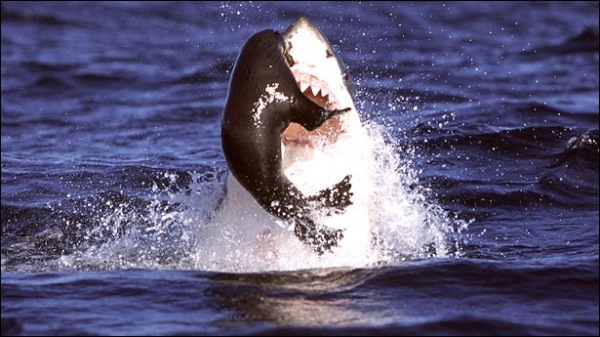Where does the name "white" shark come from?

White sharks are colored in a way described as “counter shading,” which is common for many species of marine animals. This is a type of camoflage While the top of a white shark can be gray (or brownish, or black or light gray...more on this in another shark fact blog!), their bellies are clean white. But how does having a white belly camolage a white shark? Animals looking down into the deep cannot see a shark from above as the dark shade blends in with the ocean floor and animals below a shark looking up cannot see a shark because the white belly blends in with the sunny surface of the water. So next time you see a white shark, a penguin, or an Orca, you know what the story is behind their coloration!
Now why can't Cape fur seals figure this out?

If you have a white shark question that hasn’t been featured yet on the blog, email us by clicking here!
_1420x587_crop_80.jpg)






